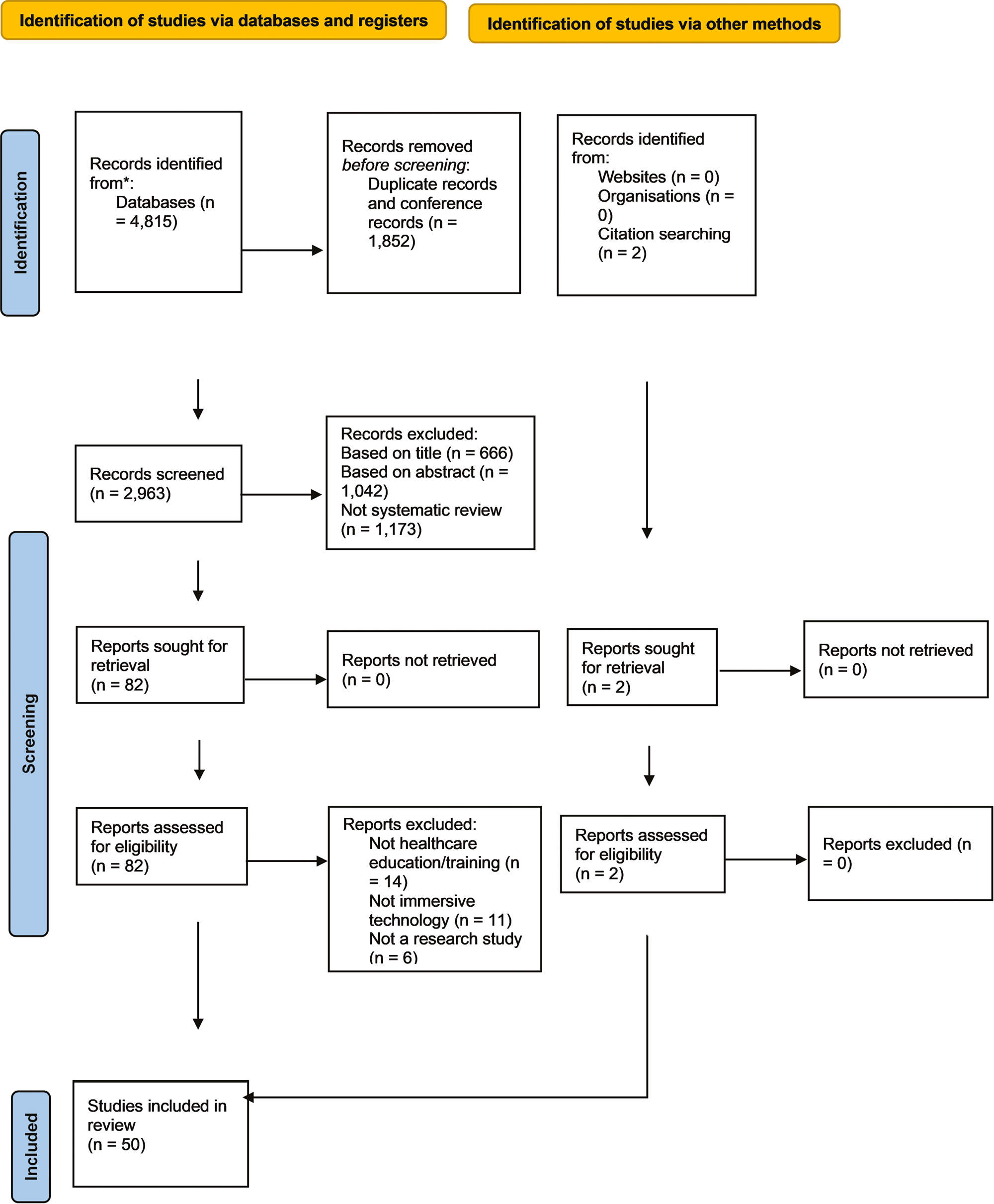
Extended reality (XR) is being increasingly used to support the delivery of healthcare education and training, offering affordable, accessible, replicable and flexible learning at scale without risk [1, 2]. XR is an overarching term for virtual reality (VR), augmented reality (AR) and mixed reality (MR) [1, 2]. A key strategic objective of the All Wales Simulation-Based Education and Training Strategy is to create the vision for how extended reality should be embedded in healthcare education and training ensuring equitable access for the workforce in Wales [3]. A literature review was undertaken to inform this and address the following questions:
● What are the application areas of XR in healthcare education and training?
● What is the effectiveness of XR upon learner/educational outcomes compared to other education and training modalities?
● What are learners’/facilitators’ perceptions of XR?
● Is XR cost-effective?
A literature search was conducted of six databases (CINAHL, Medline, Cochrane, Scopus, ERIC, Embase) from 2020 onwards. Inclusion criteria- any empirical research, XR (VR, AR, MR), medical/nursing/health/healthcare and education/training.
A total of n=2,963 papers were identified after duplicates were removed. Following eligibility screening a decision was made to limit to systematic reviews (SRs) (Figure 1-A128). Fifty SRs met the inclusion criteria; VR (n=29), AR (n=10), VR & AR (n=4) and all three types of XR (n=7). Forty-four SRs featured doctors and healthcare students; medical (n=32) nursing (n=12), paramedic (n=2) and dental (n=2), physiotherapist (n=1) and speech therapy (n=1). The most common application area was surgery (n=19), followed by nurse education (n=8), minimally invasive surgery (n=7) ophthalmology (n=5), anatomy (n=5) Eleven SRs included a meta-analysis. XR was widely accepted by participants, but some differences were noted depending on type. Non-significant improvements in knowledge, technical skills and task performance were reported, with increased operative and surgical procedural duration. Participants reported increased learner satisfaction, higher levels of self-efficacy and reduced anxiety levels, as well as barriers and adverse effects with VR and AR. Repeated use of immersive technology was shown to help improve confidence and engagement levels. No cost effectiveness or patient outcomes were reported.


XR is equivocal to traditional methods of learning and can complement existing education and training approaches. Further research is needed into the cost effectiveness of XR and the transfer of learning in clinical practice and impact on patient outcomes. Greater understanding of how to support learning through XR and mitigate barriers is required.
Authors confirm that all relevant ethical standards for research conduct and dissemination have been met. The submitting author confirms that relevant ethical approval was granted, if applicable
1. NHSX, Health Education England Technology Enhanced Learning Team, UKRI Audience of the Future Challenge, NIHR Mental Health Medtech Cooperative (MindTech) and Rescape. The Growing Value of XR in Healthcare Report. 2020. Available from: https://www.xrhealthuk.org/the-growing-value-of-xr-in-healthcare. [Accessed 22 April 2024].
2. Topol E. Topol review: Preparing the healthcare workforce to deliver the digital future Health Education England The Topol Review — NHS Health Education England. 2019. Available from: hee.nhs.uk. [Accessed 22 April 2024].
3. Health Education and Improvement Wales (HEIW). All Wales Simulation-Based Education and Training Strategy for the Healthcare Workforce The vision for the next five years: 2022 – 2027. 2022. Available from: heiw.nhs.wales/files/all-wales-simulation-strategy-mg-draft-6pdf/. [Accessed 22 April 24].